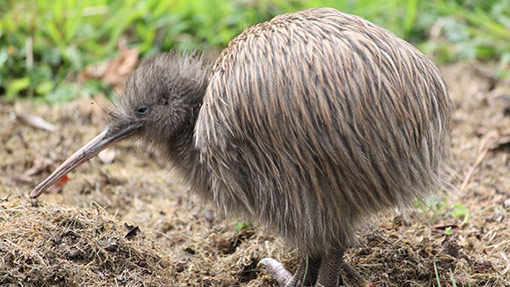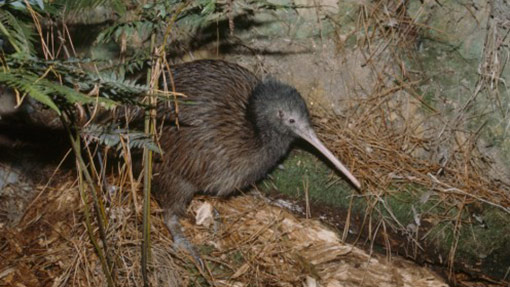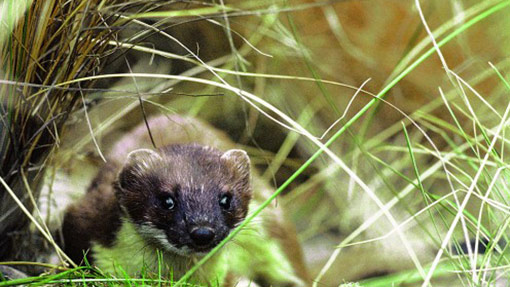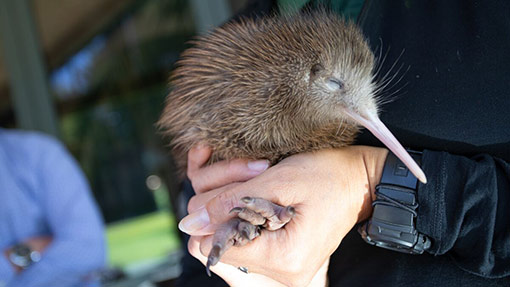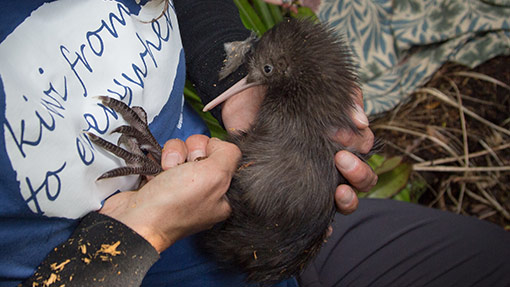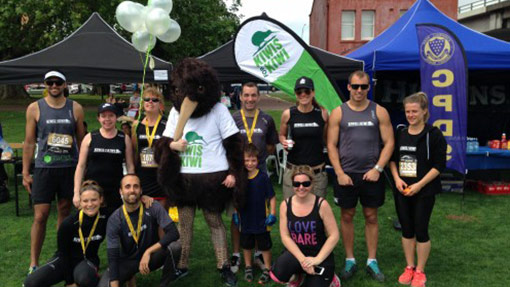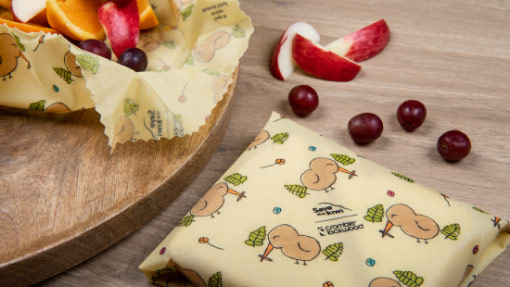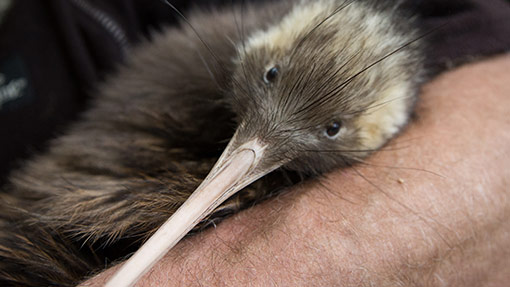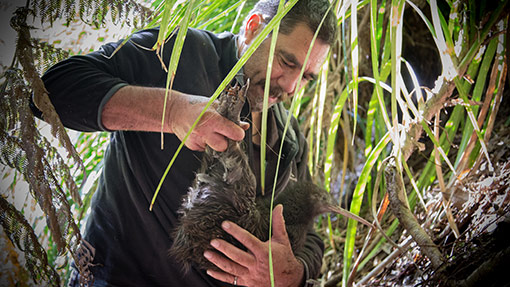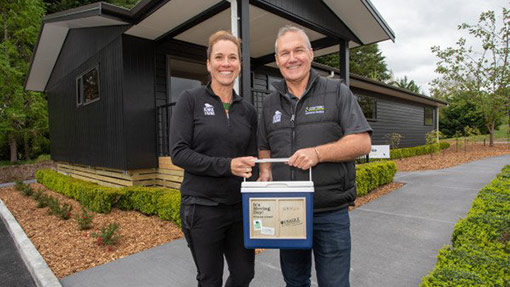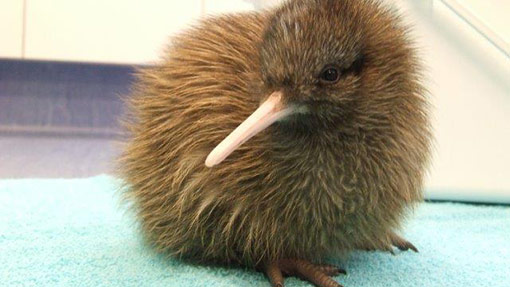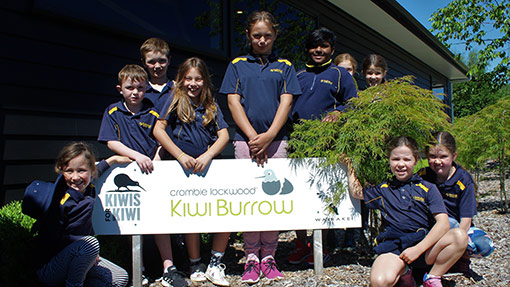By Erica Cassidy
Gazing into the shy, soulful eyes of a fluffy kiwi chick was an experience that changed us forever.
Three weeks earlier, we had been scheduled to courier a kiwi from the Gallagher Kiwi Burrow in Taupō to Rotoroa Island in Auckland’s Hauraki Gulf. Unfortunately, our precious cargo hadn’t put on enough weight in his final checkup so his relocation was postponed. When his time came, though, we were delighted to learn that not only was the chick known as “Bramble” alive, kicking and ready to be released onto Rotoroa, but two of his Gallagher Burrow buddies were coming too. Happy days! And happy humans too. Sonny was moved to tears of joy watching our little traveller pass his health check, and I’ll never forget the sight of their three boxes, made kiwi-cosy with native flora, strapped into the back seats next to Casper and Harley as we wound our way north from Taupō.
The kiwi is such a cultural icon, one of those instantly recognisable silhouettes, that it can be easy to forget that we’re in danger of losing these quirky, ground-dwelling feathered souls forever.
Legend has it that Tane Māhuta asked all the forest birds for a volunteer to leave the light-dappled canopy and live on the ground, in order to eat the insects that were killing the trees. The other birds refused to give up their ability to fly, but kiwi agreed and in return was given thick, strong legs to be able to tear apart logs, brown feathers for camouflage, and special nostrils at the end of his beak to detect insects in the ground. Because of his selfless sacrifice for the good of the forest, kiwi became our national icon.
With no ground-based predators to ward off, kiwi didn’t need to fly and instead developed a protective ‘freeze’ response. This was perfect when their only hunters were eagles or falcons flying overhead but made them sitting ducks for introduced carnivores.
Currently, an estimated 20 kiwi are killed each week by non-native predators such as stoats, ferrets and dogs. In areas that aren’t actively managed, only 5% of kiwi chicks survive to reach breeding age. From a pre-human population of around 12 million, kiwi numbers have plummeted to 68,000 and continue to decline, which is why the conservation efforts of Save the Kiwi are so important.
The Gallagher Kiwi Burrow is a specialist kiwi incubation, hatching, and brooding facility located just out of Taupō and is an integral part of Save the Kiwi’s mahi. Eggs are collected from the wild and transported to the Burrow where they’re incubated, hatched, and cared for until they reach around three weeks old and can feed themselves. Some birds are released into an on-site ‘crèche’, some go to Sanctuary Mountain Maungatautari, while others, such as our adorable trio, graduate to a kiwi kindergarten of sorts on Rotoroa Island in the Hauraki Gulf. They’ll stay here until they reach 1kg, at which point they are better able to defend themselves against stoats and can be released into the wild.
Couriering baby chicks from their hatching facility is one way for kiwi lovers to be involved, by allowing what would have been transportation costs to be diverted to other kiwi conservation initiatives. It was thanks to this opportunity that we found ourselves loading “Bramble”, “Rif Raf” and “Zephyr” into the back of my car at 7am on a misty Sunday morning.
Spending the day as kaitiaki to these chicks was an honour that we will carry for decades to come, happy that our national taonga are safe and thriving where they should be, in the wild forests of Tane Māhuta.
